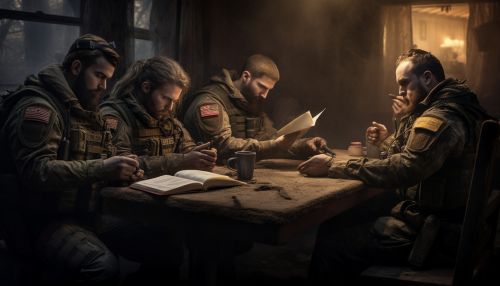Army Alpha
History
The Army Alpha test was developed during World War I by Robert Yerkes and his colleagues. This was a period when the U.S. Army needed a method to evaluate the intellectual and emotional fitness of the millions of soldiers being sent to the front lines. The Army Alpha was designed as a group-administered test for literate soldiers, while the Army Beta was designed for illiterate, non-English speaking, or unschooled soldiers.


Structure and Content
The Army Alpha test consisted of eight different types of examinations, each designed to measure different aspects of intelligence and cognitive ability. These included:
- Arithmetic Reasoning: This section tested the individual's ability to solve simple arithmetic problems.
- Disarranged Sentences: The test-taker was required to rearrange a set of words to form a coherent sentence.
- Information: This section consisted of general knowledge questions.
- Synonym-Antonym: The individual was asked to identify synonyms and antonyms for a given word.
- Number Series Completion: This part of the test involved completing a series of numbers following a certain pattern.
- Analogies: The test-taker was asked to identify the relationship between two words and apply it to another pair of words.
- Practical Judgment: This section evaluated the individual's ability to make sound decisions in practical situations.
- Direction: This part of the test measured the individual's ability to follow written instructions accurately.
Purpose and Use
The primary purpose of the Army Alpha test was to classify and assign soldiers based on their intellectual abilities. Those who scored high on the test were often assigned to officer training or technical tasks, while those with lower scores were usually assigned to more manual labor tasks. The test also helped identify individuals with potential mental health issues, who were then referred for further evaluation.
In addition to its military use, the Army Alpha test had a significant impact on the field of psychology. It was one of the first examples of a group-administered intelligence test, and it paved the way for the development of future standardized tests.
Criticisms and Controversies
Despite its widespread use and influence, the Army Alpha test was not without its critics. Some argued that the test was culturally biased, as it relied heavily on knowledge of American culture and English language proficiency. Others pointed out that the test did not adequately measure all aspects of intelligence, such as creativity or emotional intelligence.
Furthermore, the use of the Army Alpha test to classify and assign soldiers was controversial. Some argued that it was unfair to base such important decisions on a single test score, while others questioned the validity of using an intelligence test for this purpose at all.
Legacy
Despite these criticisms, the Army Alpha test had a lasting impact on the field of psychology and the development of intelligence testing. It demonstrated the feasibility of group-administered intelligence tests and paved the way for the development of future standardized tests. Today, many of the principles and methods used in the Army Alpha test are still used in modern intelligence tests.
